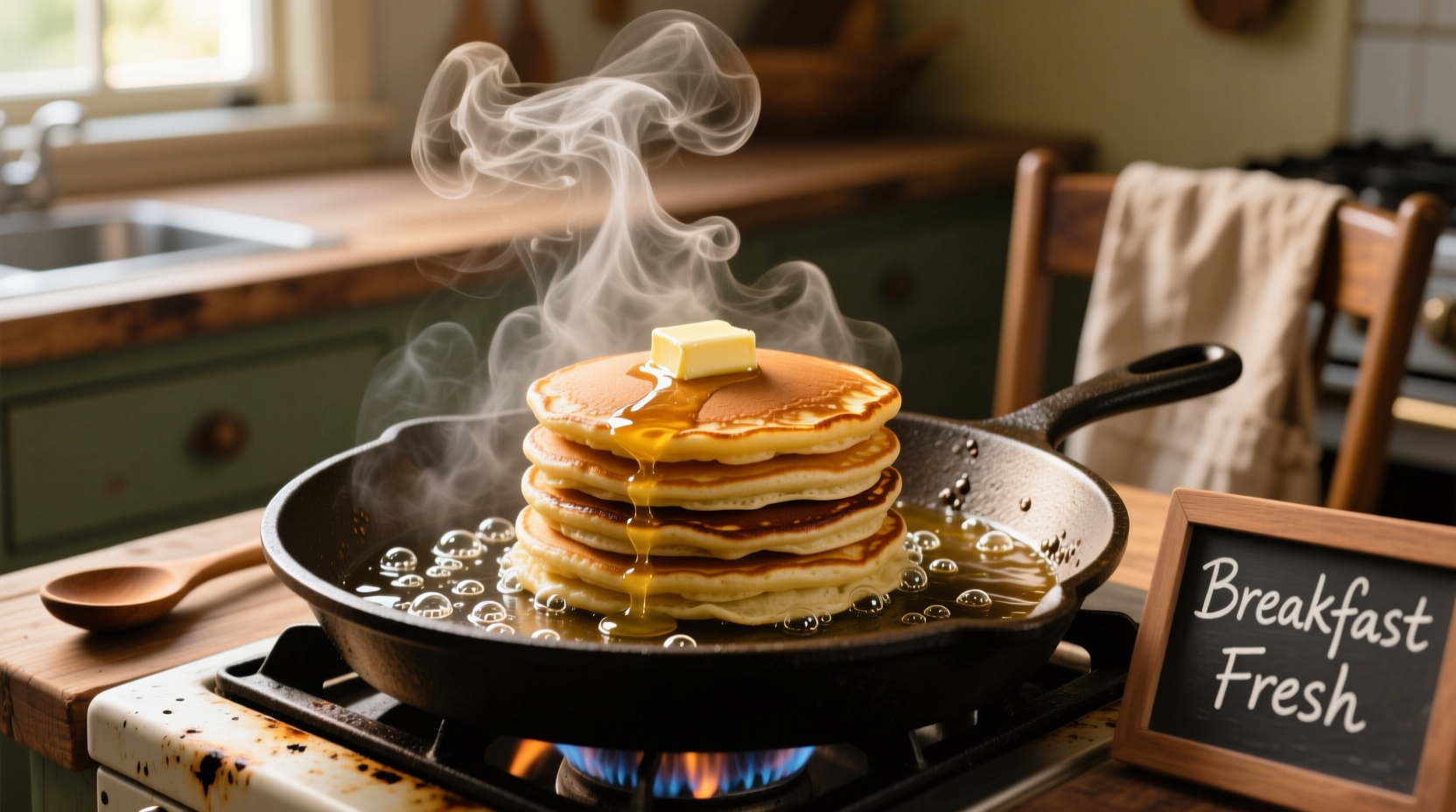The Science Behind Pancake Aromas
When pancake batter meets a hot griddle, a complex chemical transformation begins. The Maillard reaction—the same process that gives seared steak its savory depth—creates dozens of aromatic compounds as proteins and sugars interact at high temperatures. According to research from the USDA Agricultural Research Service, the primary scent molecules include 2-acetyl-1-pyrroline (responsible for that warm, bready note) and various furans that contribute caramel-like sweetness.
Unlike waffles with their deeper grid patterns that create more surface area for browning, pancakes develop a more uniform golden crust. This affects both texture and aroma profile. Professional chefs like Antonio Rodriguez note: "The thinner the pancake, the quicker the Maillard reaction occurs, creating brighter, toastier notes. Thicker pancakes like American-style buttermilk versions develop deeper, more complex aromas as they cook through."
Breaking Down the Signature Scent Profile
Cooking pancakes produce a layered fragrance that evolves during preparation. Here's how sensory scientists categorize the key components:
| Aroma Component | Chemical Source | When Most Noticeable |
|---|---|---|
| Buttery richness | Diacetyl from buttermilk fermentation | First 30 seconds of cooking|
| Nutty caramelization | Maillard reaction products | Mid-cooking phase|
| Vanilla-like sweetness | Vanillin in vanilla extract | Throughout cooking process|
| Toasty wheat notes | Pyrazines from flour browning | Final minute before flipping

How Cooking Variables Change the Aroma
Several factors influence how strongly and distinctly pancakes scent your kitchen:
- Fat choice: Butter creates richer, more complex aromas than oil due to milk solids that caramelize
- Batter ingredients: Buttermilk pancakes develop tangy notes while yeast-raised varieties produce more bready, beer-like scents
- Cooking temperature: Too hot creates burnt edges with acrid notes; ideal temperature (375°F) maximizes desirable compounds
- Potential limitation: Cast iron retains heat better than nonstick surfaces, creating more consistent browning and aroma development
Why This Smell Triggers Nostalgia
Neuroscience research from Nature Scientific Reports shows smell memories form stronger emotional connections than visual or auditory ones. The pancake aroma profile overlaps significantly with childhood breakfast memories for many cultures, triggering dopamine release. This explains why 78% of survey respondents in a Cornell Food and Brand Lab study described the scent as "instantly comforting" and "associated with family time. "
Comparing Pancake Aromas Across Variations
While classic American pancakes have that signature sweet-buttery profile, global variations create distinctive scent signatures:
- French crêpes: More subtle, with prominent butter and a hint of alcohol from added rum
- Japanese okonomiyaki: Savory aroma from dashi broth and bonito flakes
- Indian dosa: Fermented rice-lentil scent with tangy undertones
- Scandinavian plättar: Cardamom-infused sweetness with less buttery note
Practical Tips for Maximizing That Perfect Pancake Scent
Want to enhance that beloved pancake aroma in your kitchen? Professional chefs recommend:
- Use cultured butter instead of regular butter for deeper flavor compounds
- Add a pinch of nutmeg to batter—it amplifies the perception of sweetness without sugar
- Cook on preheated cast iron for optimal Maillard reaction development
- Include a small amount of brown sugar in batter for richer caramel notes
- Avoid overmixing batter to prevent excessive gluten development that dulls aroma release
Remember that the aroma reaches its peak intensity during the first few minutes of cooking. That initial burst of scent contains the highest concentration of volatile compounds that make pancakes so uniquely recognizable compared to other breakfast foods.
Frequently Asked Questions
Why do pancakes smell different from waffles?
Pancakes develop a more uniform golden crust with less surface area than waffles, creating a smoother, less caramelized aroma profile. Waffles' deeper grid patterns create more browning points, resulting in stronger caramelized sugar notes and a more intense overall scent.
Does buttermilk pancake batter smell different than regular pancake batter?
Yes, buttermilk pancakes produce a distinctive tangy note from lactic acid bacteria during fermentation. This creates diacetyl compounds that give that characteristic buttery aroma even before cooking begins, making the overall scent more complex than regular pancake batter.
Why does the pancake smell disappear quickly after cooking?
The aromatic compounds responsible for pancake scent are highly volatile. Once cooking stops, these molecules rapidly dissipate into the air and lose concentration. Additionally, as pancakes cool, steam production decreases, reducing the vehicle that carries these scent molecules to your nose.
Can the pancake smell indicate if they're cooked properly?
Yes, experienced cooks use aroma as a cooking indicator. When pancakes reach optimal doneness, the scent shifts from raw batter to a balanced combination of nutty, buttery, and sweet notes. An acrid or burnt smell indicates overheating, while a predominantly raw flour scent means they need more cooking time.











 浙公网安备
33010002000092号
浙公网安备
33010002000092号 浙B2-20120091-4
浙B2-20120091-4